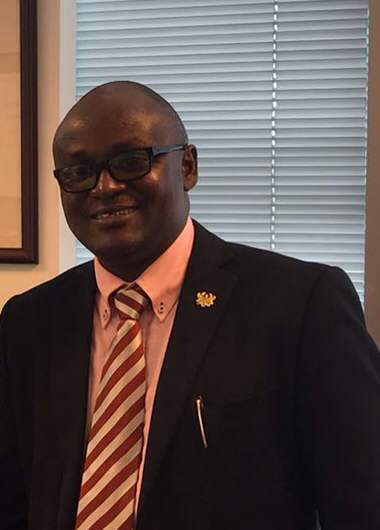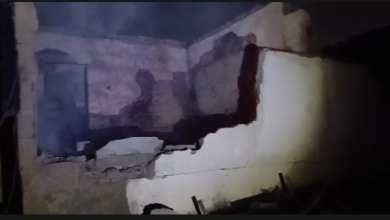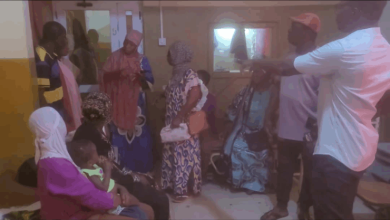
Recent happenings in Ghana all point to a divine warning from above to authorities to improve Emergency Health care systems in Ghana.
We have seen the failure of our emergency health care system take away so many lives in the past. In the mist of our emotions and sorrows, we tend to make “31st December resolutions” promising to turn over a new leaf with our emergency health care services, but these are often short-lived.
Although lots of concerns have been raised about our ill Emergency Health care system and the need for an urgent remedy, the loudest cry came from a lifeless body on Friday June 29,2018.
We had a rude awakening about the serious and blood-sucking gaps in our Emergency Health system when we were told on Friday about the circumstances surrounding the death of His Excellency Paa Kwasi Amissah Arhur, the Former Vice President of the Republic of Ghana.May his gentle soul rest in peace.
Few questions flood your mind when you are hit with this news:
- Did he suffer a cardiopulmonary arrest?
- Was there a call for help to the prehospital emergency care service?
- Did the prehospital emergency care service have a functional ambulance around that area?
- Did the observers/bystanders initiate cardiopulmonary resuscitation(CPR) after confirming the absence of a pulse and normal breathing?
- Did the bystanders have access to an AED (automated external defibrillator)
- Did they know how to use the AED if it was available? And did they use it?
- Did the help arrive and on time? What was the response time?
- How was he transported to the hospital?
Outcomes of acutely ill and injured patients depend on timely pre-hospital interventions made by either first responders such as the police, fire, bystanders/general public or prehospital emergency medical personnel responding to a call for help through their emergency medical dispatch system.
There are time sensitive illnesses and injuries requiring specific prehospital interventions by trained first responders (and first responders could be the general public) in order to optimise the outcomes of the person with the malady.
Cardiopulmonary arrest: Any person confirmed to be pulseless and without normal breathing (gasping or agonal breathing or not breathing) should immediately receive cardiopulmonary resuscitation(CPR) beginning with chest compressions.
Most adults with cardiopulmonary arrest are likely to have an abnormality of their heart rhythm as the underlying cause. There are 2 main deadly heart rhythms (Ventricular fibrillation/VF and pulseless ventricular tachycardia/pVT) which respond appropriately to defibrillation (electrical shock) using an AED (automated external defibrillator). Although these 2 malignant abnormal heart rhythms respond well to an electrical shock, for every minute lost in not shocking the cardiac arrest victim, there is a 10% loss in the chance of a successful revival of the person.
In effect, after 10 minutes without shocking the victim, there is theoretically a zero chance of a successful revival.
This is the reason why other societies that prioritise emergency health care make sure that AEDs are conspicuously positioned at public places, offices, train stations, bus terminals and on all ambulances.
Once available, the operator of the AED will just need to turn on the machine and follow the voice prompts which are pretty easy to follow. A one-day training is what is needed for the skills in cardiopulmonary resuscitation including the use of the AED.
These skills are important for everyone to acquire since you could be the difference between life and death for someone suffering a cardiac arrest in your house, office, church, school, market, shop, gym, pavement and indeed anywhere imaginable.
Stroke: One of the illnesses whose outcomes are optimised by early prehospital interventions is ischaemic stroke (caused by a blocked blood vessel as opposed to a bleed). Early prehospital activation, early Head CT scan followed by a time bound in-hospital intervention has been shown to lead to very good outcomes because “time is brain”.
Trauma: Persons with injuries from different mechanisms (road traffic crashes, pedestrian injuries, gas explosions, industrial worked-related injuries etc) will benefit from a prehospital trauma system that ensures field triaging (sorting out) of these persons into injury severity and subsequent transportation to the nearest but appropriate hospital. The concept of the “golden hour of trauma” ensures that persons with injuries are timeously assessed by prehospital emergency medical personnel and resuscitative measures initiated at the scene and continued while transporting to the definitive care facility.
Other similar systems have shown good outcomes for heart attack (myocardial infarction), sepsis, obstetric and gynaecological haemorrhage.
Some of these interventions contribute to the differences in life expectancy in our society and those of others who have found it necessary not only to talk about the challenges but to actually put in measures to curtail similar disastrous outcomes from occurring.
While the fact that Ghana is a developing economy is not lost on us, proper planning and prioritisation could ensure that these gaps are bridged within an appreciably short period of time.
Dr Maxwell Osei-Ampofo;MBChB;MBA;MPH;FGCS;Fellowship in Emergency Medical Services(EMS), University of Toronto, Ontario, Canada maxwelloseiampofo@yahoo.com
Source:Ghana/otecfmghana.com




